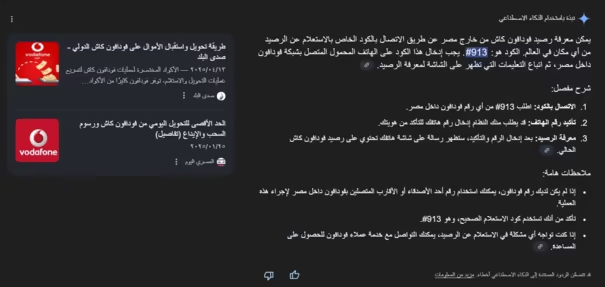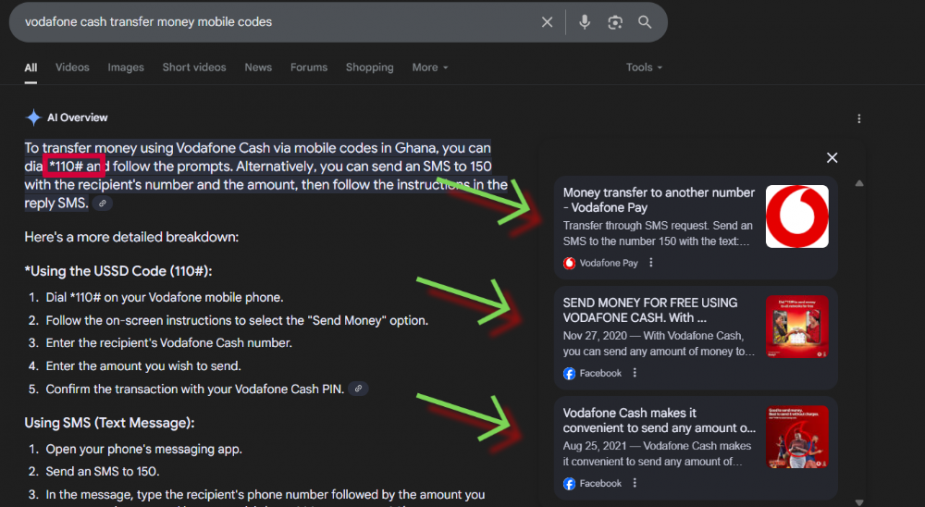
Subject
Imagine this.
You’ve just optimized a detailed guide on USSD codes, or Math equation or maybe a promo code for your product ! "I will discuss on USSD codes" — everything from *9*13# to *105#, hoping to help users navigate mobile services. Your page ranks well, the content is accurate, but when Google’s shiny new AI Overview shows up at the top of the SERP… your asterisk is gone !
Instead of:
To check your balance, dial
*9*13#You see:
To check your balance, dial
913#
Wait — where did the asterisks go?! And more importantly - how do you fix it?
They were in your content. You triple-checked. But Google’s AI Overview just… removed them. That’s not a fluke. It’s a pattern.

At Reparo, we decided to investigate a pattern that kept popping up:
Google’s AI Overview often removes the asterisk (*) from its summaries — even when it’s vital to the meaning of the content. This isn’t a bug. It’s how the AI Overview interprets structure and context. Symbols like*are often stripped unless they appear in very specific ways.
So, what makes Google’s AI decide that*doesn’t matter?
We’ve analyzed multiple results and discovered that Google’s AI Overview selectively filters certain characters — especially*. The asterisk, despite its critical role in many command syntaxes (like USSD codes and Coding), is treated as non-essential unless it’s given specific structural context.
Why would Google do that?
Google’s AI Overview doesn’t behave like traditional featured snippets. It’s not just pulling exact HTML — it’s interpreting content using a Large Language Model (LLM). That model is trained to:
And unfortunately for us,*is usually on the chopping block — unless we tell Google otherwise.
Where *Is Stripped (Most of the Time)?
We ran tests across dozens of pages and found a consistent trend, based on that here’s where the asterisk gets dropped:
Result:
*9*13# ➝ becomes ➝ 913# in AI Overview SERP !
This woud be considered catastrophic for industries relying on precise formatting — like telecom, education, fintech, and even emergency contact guides.
Where * Is Preserved: Your Toolbox ?
To make sure your asterisks appear as intended in AI Overviews:
For example:
<code>*9*13#</code>
or
<table><td>*9*13#</td></table>
Hidden Hack: tel:*13*9# Keeps the Asterisk Alive !
One unexpected behavior we found is that Google preserves * when it’s inside a clickable phone link.
<ahref="tel:*9*13#">*9*13#</a>
Here’s the trick:
This is usually rendered as tel:*9*13%23 (the # is URL-encoded).

Google understands tel: protocol as a phone interaction, and when AI parses these links, it preserves the full code, including asterisks.
Insight: Google recognizes tel:* as more than just text — it’s functionally relevant. This tells us something critical:
When you link the asterisk inside a tel: protocol, Google respects it. It assumes you meant for the full code to be dialed, not interpreted.
So what that means to us? yes structure is everything to take in consideratieon when ranking for the AI engines !
But you think i missed something which is:
Why the Hash (#) Survives But the Asterisk Doesn’t ?
Good question, so lets do a quick and easy breakdown. It gets even more interesting when you compare*to another special character:#.
A marker with social or technical meaning (e.g., CSS #id, Twitter #trends).
That’s why Google’s AI Overview tends to keep the hash and silently drop the asterisk unless you give it reason to respect it.
If you're in any of the following industries:
then you need your asterisk to survive in the AI Summary. Here’s how to do it:
Let’s be real. For a telecom brand, fintech platform, or USSD-based service — getting the code wrong is a dealbreaker.
If your AI Overview result says 913# instead of *9*13#, you lose trust. Worse: users fail to complete their actions.
And here’s the kicker:
Google is rewriting your content using AI. If your formatting isn’t rock solid, it’ll break.
That means we — as content creators, SEOs, and developers — must write not just for HTML, but for AI interpretation.
Structured Data Isn’t Enough !
You might think, “Well, I’ll just use JSON-LD or schema markup to make it clear.”
Spoiler: Even in structured data, if you’re using text fields (description,howToStep, etc.), * may be interpreted away unless:
Is it possible to show in AI overview while * written in a raw text ?
Well, we have done analysis for this too, and yes its possible but when the same content concentrate on the same thing for example, when searching for 110 vodafone cash code, usually this happened to appear in couple of websites, google will definitly generate the content for the AI overview depending on all of these source, but make sure they will take the code "*110#" for example from those websites having it in one of the Tags we mentioned above.
check the image below for example:
We were searching for "vodafone cash transfer code for mobile"

The result in AI overview has the "*" this is has been fetched from the Facebook page, the "*" there has been writtein inside a div tag not a <p> nor <h1> or the other tag we talked about !

the first result on the right side has no *110# in the content so the only faceook results has it, thats why its been written in the AI overview.
The future of SEO is no longer just about being first on the page. It’s about being first in the AI Summary.
And to win that spot, your content has to speak the language of AI — one that values clarity, structure, and context over plain semantics. At Reparo, we believe small details like * vs # are no longer small.
They’re the difference between:
So next time you write content that includes *, ask yourself:
Will Google’s AI understand that this isn’t a typo — it’s the point?
If not, structure it until it does.
